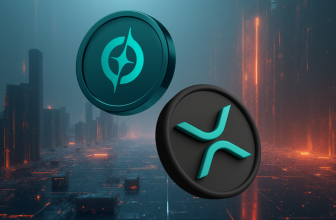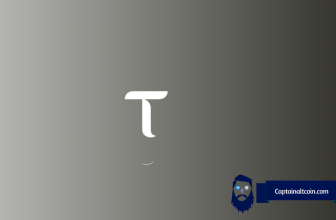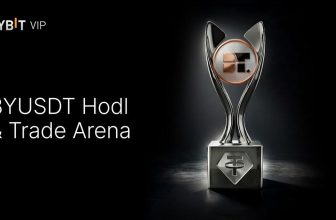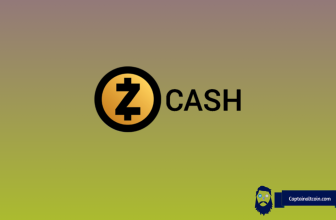
Binance caused intrigue in many when it originally announced its latest initiative: a fully-operational decentralized exchange (DEX). The community was more than surprised, as words “Binance” and “decentralization” had as much to do with each other as “banking” and “blockchain”. Still, the upcoming community-focused exchange is very much a reality so we’ll be taking a closer look at it in this article.
What you'll learn 👉
Why Binance DEX?
Binance has been going from strength to strength ever since its late 2017 ICO/early 2018 establishment as a crypto exchange. Led by its charismatic and ambitious CEO Changpeng Zhao, the platform has made all the right moves during its short, but fruitful existence.
Even with it passing most of the tests that came its way with flying colors, some weren’t happy with Binance due to their obvious issues with centralization.
While its monolithic features surely made the platform safer, faster and more efficient, the fact of the matter is: Binance doesn’t let you own or handle your private keys.
Any funds you keep on Binance are stored on wallets whose keys are owned by the exchange; this means that a third party is responsible for the safety of your cryptocurrency holdings, and that basically goes against many key tenants of the blockchain revolution. Mostly because it can be extremely dangerous and expose you to a total loss of funds.
I personally learned this lesson not after hearing someone else tell me about it, but after having a personal negative experience (as is usually the case in life). This experience was related directly to Binance; the exchange silently updated its policy regarding who can create accounts on it and I and many other citizens of countries that are placed on the outdated OFAC bad-boy list (which Binance chose to abide by) ended up locked out of our funds.
To cut the long story short, Binance likely realized that more and more community members aren’t comfortable with trusting their funds to a third party. This has led many people to shift towards alternative means of cryptocurrency trading and decentralized exchanges seem to be just what the doctor ordered.
A DEX allows people to place orders and trade cryptocurrencies without a third party managing or controlling user funds. Pointing out the fact that many are equating the DEX craze of 2018 to the ICO craze of 2017 is probably the easiest way to understand the importance of this phenomenon to the crypto community.
About Binance DEX
First sneak peeks into the Binance DEX came in mid-2018, when Zhao shared relevant „pre-alpha“ details about the platform via his very active Twitter account. While he kept up with vague updates during the following months, a first in-depth look into the decentralized exchange was released in December of that same year.
Finally, Zhao came out of the coding hole once again earlier this week, when he explained that Binance’s DEX team „continues to BUIDL“ , in spite of the at-the-time ongoing Lunar New Year celebrations.
The tweet above offers a quick overview of the upcoming blockchain’s block explorer. the DEX is expected to be launched on a testnet in a week or so.
Binance DEX will be built on top of the Binance Chain, upcoming blockchain that will allow Binance’s native token BNB to move away from Ethereum onto its own native mainnet.
The chain is being built on top of Cosmos’ Tendermint protocol; more precisely, Binance forked the protocol and removed some of its elements (smart contracts for example) to create a scalable product that will be able to achieve high transaction throughputs required by Binance standards.
Binance’s new native chain will rely on modified Tendermint PoS algorithm which will basically operate as a Delegated Proof of Stake algorithm. The chain (once its testnet goes live in a couple of weeks) will be tested on 11 validating nodes. Total number of validators won’t go up much higher when the mainnet ultimately goes live.
Comparing the network’s operation model to that of NEO and (trigger warning for XRP holders) „Ripple“, Zhao revealed that initial validator selection will be made from a pool of Binance’s closest partners. Further down the line Binance might start considering community nodes to expand the chain validator network.
Focus on Scaling
Zhao claims that this DEX will be able to handle current volumes of its centralized older sibling, aka the regular Binance exchange. This will require high levels of performance from the Binance chain, which is why Cosmos was selected as a base to fork off of. Binance Chain will be able to generate blocks every second and process “a couple thousand” transactions in that same time frame.
Scaling has been a significant issue for decentralized exchanges in the past, as their inability to process high transaction throughputs ultimately led to major losses of on-platform liquidity and transaction volume.
Binance DEX will look to offer impressive processing speeds; however some prominent crypto minds, like Ethereum’s very own Vitalik Buterin, feel that this performance-based approach isn’t the best one for the user. Vitalik praised the model of EtherDelta, a project that (according to him) offers a much more convenient, anonymous, and decentralized way of trading than what you get with Binance DEX/chain.
Other features
The exchange will command a high listing fee for cryptocurrencies (Zhao mentioned the number of $100,000), supposedly to ward off spammers and fake projects. The process will also include a vote by Binance Chain validators on whether or not the cryptocurrency should be listed.
As the exchange will have its own blockchain to operate on, it is expected that every new coin on the exchange (one that wasn’t launched on top of Binance Chain) will actually be a Tether-like stablecoin pegged to the value of the corresponding asset. Binance DEX will overall allow its customers to do the following:
- Send and receive BNB to anyone on the DEX
- Issue new tokens
- Send tokens to others on the DEX, and receive some in return
- Burn tokens as needed
- Freeze some tokens, and unfreeze them later
- Propose new trading pairs, with the whole community having a say on the merits of the pairing
- Send buy and sell orders through trading pairs the community created
On the topic of token issuance, it is important to note that there is a distinct lack of possible token types that can be launched on top of Binance Chain. As we said before, Binance forked away the original algorithm’s smart contracts, greatly limiting the specialization of tokens/projects that launch off of its chain.
Such an infrastructure is still a good place for security tokens issuance, and with Binance investing significant funds into its Launchpad project, we might start seeing the Chinese company dominate this niche in the near future.
The DEX will rely on another in-house built product, Binance’s own wallet application called Trust Wallet, to store user funds in a non-custodial fashion. This means that the wallet will store your private keys only on your device, allowing you to retain full control over your funds and data.
The DEX will be accessible through desktop browsers, but it will be interesting to see if and when Binance integrates trading features directly into the Trust Wallet. This would be a major benefit for the exchange as it would mean simpler access to on-DEX trading for mobile users.
Binance also gave early access to other select wallet/blockchain explorer/tool developers to ensure that Binance Chain and Binance DEX launch with strong support from the get-go. As such, Ledger already confirmed that their Nano S wallets will be compatible with the DEX/Binance Chain, and further integration with Nano X is set to come in the near future. Binance’s CEO recently held a lengthy live-stream where he revealed many more details about the upcoming DEX and Binance Chain; you can watch a recording of this live-stream here.
Is Binance DEX… an actual DEX?
Zhao and the company seem to be very proud of both the chain and their DEX, marketing them as something „made by the blockchain community, for the blockchain community“. However, many are asking questions regarding how much of decentralized exchange this DEX actually is, and they are asking them quite rightfully so.
Not much is known about Binance DEX account creation model, but you likely won’t be required to go through the tedium of KYC/AML registrations to trade the stablecoin-like assets on the platform.
This might change if you, for example, decide to turn your Binance Chain-launched BTC stablecoin into real BTC. If that turns out to be a requirement and if your private key isn’t the only „ID“ you’ll ever need to exchange value on Binance DEX, then all the talk about decentralization goes up in the air.
Essentially, you are issued an IOU, a placeholder token on Binance chain that acts as a proxy for the actual BTC, ETH or other You get your real „physical“ coins when you withdraw them to your own wallet.
And while this means that Binance DEX won’t actually offer non-custodial storage, it does suggest that you’ll have a certain safety net in terms of your private keys. If you lose your private key you won’t lose access to your actual funds, but only to the Binance Chain-issued stablecoins.
This means that you could potentially regain access to your funds even without the private key. This does place alot of control over your funds into the hands of a third party, which is the complete opposite of what a proper DEX should do.
Additionally, the relative centralization of DpoS algorithm Binance Chain adds to the issue. A crypto commentator once said that if your currency cannot be 51% attacked (which is an issue related only to PoW currencies), then it isn’t decentralized. As Binance Chain is s DpoS project that will have just 11 validating nodes to begin with, it might end up being even more centralized than similar DpoS projects well-known for their issues with centralization like EOS or TRX.
Such a blockchain is basically a permissioned, private network, where only select members will get to take part in maintaining and validating it.
This means that only elite few members will get to decide which coins get listed (or delisted), what the on-chain gas fees will be like (BNB, native Binance token will be used to pay these), how big the listing fees will be and more. All of this requires a certain level of trust in the third parties that will basically control your money, and „trust“ isn’t something that goes well with the world of decentralized blockchain.
Conclusion
Binance DEX is definitely an interesting project. While it isn’t a true decentralized exchange, it offers certain elements of decentralization that represent a step in the right direction.
It will apparently operate as a hybrid of a centralized/decentralized exchange, offering some neat features (and also some drawbacks) of both models. It remains to be seen how that will work and if it will be enough for people who consider decentralization a key tenant of crypto.








